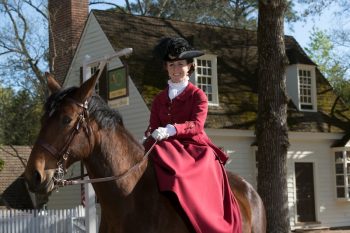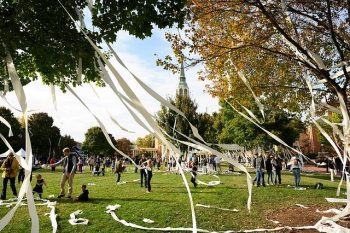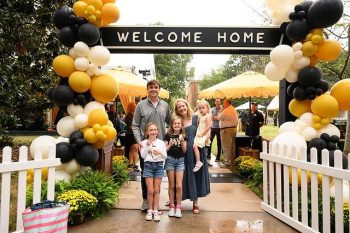Harold Greeney (’93) has taken a circuitous journey through Ecuador, Poland and Arizona since his time at Wake Forest, and it has paid off.
Five years ago, he and a longtime friend and colleague assembled a rockstar group of scientists to compete for the $5 million “XPRIZE Rainforest,” sponsored by the environmentally focused Alana Foundation. After competing against 300 teams in several rounds of the five-year competition, they took home the grand prize in November for their masterful use of drones, DNA detection, air and water filtration, and other technology, to survey 100 hectares (about 250 acres) of tropical rainforest in 24 hours and provide meaningful real-time insights within 48 hours.
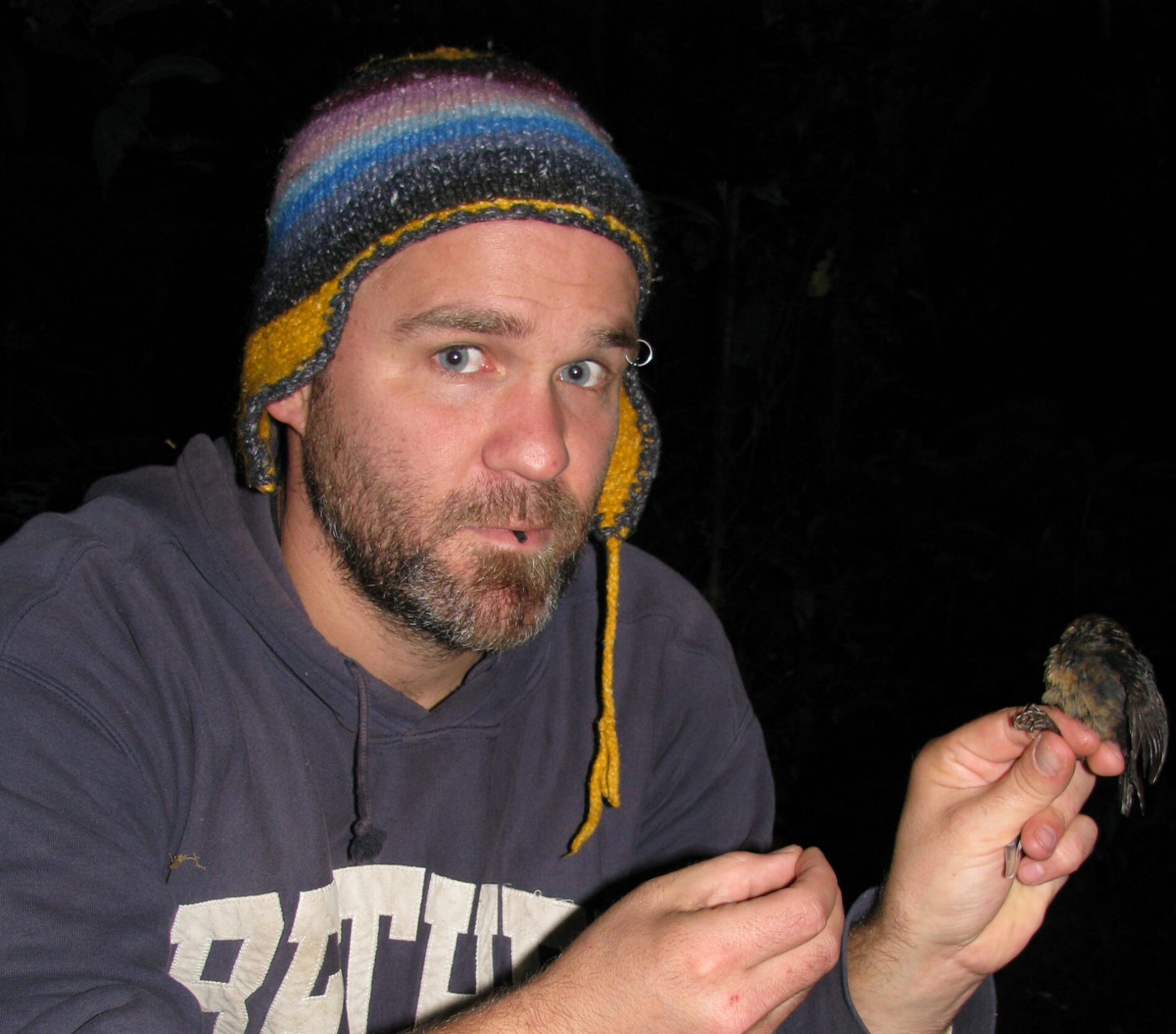
Harold Greeney (’93) conducting research; above, Yanayacu Biological Station and Center for Creative Studies, which he built in Ecuador. Photos courtesy of Greeney
In the end, the “Limelight Rainforest” team included about 60 members ranging from biologists, anthropologists and engineers to drone pilots, among other experts. The sensor platform they developed was deployed using drones to the rainforest canopy, collecting data, images of insects and insect specimens attracted to its light trap. The platform also provides a real-time data feed to its base technology and then quickly identifies all sorts of flora and fauna using machine learning.
Now, they are looking at ways to commercialize their work, making it available more widely for rainforest research and conservation. It’s one of many unexpected turns Greeney has taken during three decades as a research biologist specializing in identification and observation of rare insects, along with birds and their homes, and amassing about 450 published research papers so far.
Kelly Greene (’91), managing editor of Wake Forest Magazine, caught up with Greeney by Zoom at his home outside of Tucson, Arizona, to hear more about his adventurous work. Here are excerpts from their conversation, edited for length and clarity.
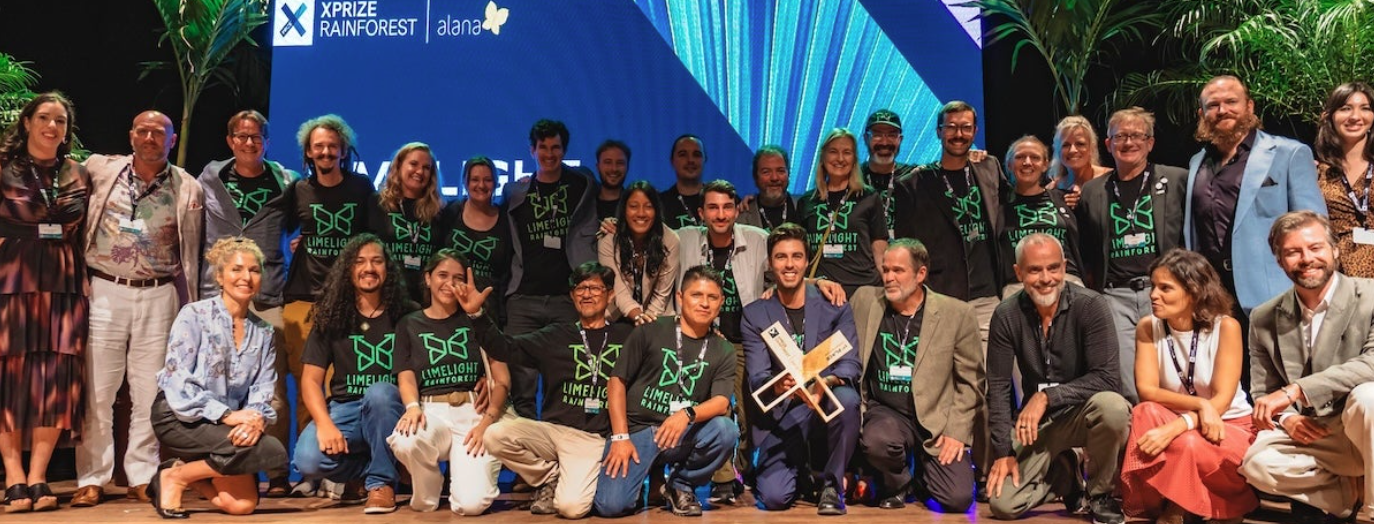
Greeney (front row, fourth from the right) led insect and bird identification for the "Limelight Rainforest" team, winners of XPRIZE Rainforest. Photo courtesy of XPRIZE Rainforest
Kelly Greene: Congratulations on winning the XPRIZE Rainforest’s grand prize. How did your “Limelight Rainforest” team come together?
Harold Greeney: Yeah, it’s a pretty diverse group. Everything from anthropologists to engineers, tech people and drone pilots. The core team was built around the biologists. But we quickly realized that to jump through all the hoops set before us to get to the finish line, we really needed a lot of expertise outside of just knowing the biology. … We won $5 million, but we spent about $2.5 million to get there, and that was a combination of labor and parts.
I moved to Ecuador for a year before going to grad school, and I worked as a jungle guide, and I met another guy (Tom Walla) who was doing an endless summer surfing around the world and had heard they needed jungle guides. And he just fell in love with biology and ended up going on to get a Ph.D. and had been a professor up in Colorado for many years, and somebody told him about the XPRIZE. He called me up one night and said, “Hey, I want to try this.” I was like, “Wow, how could I turn down a chance for $5 million?”
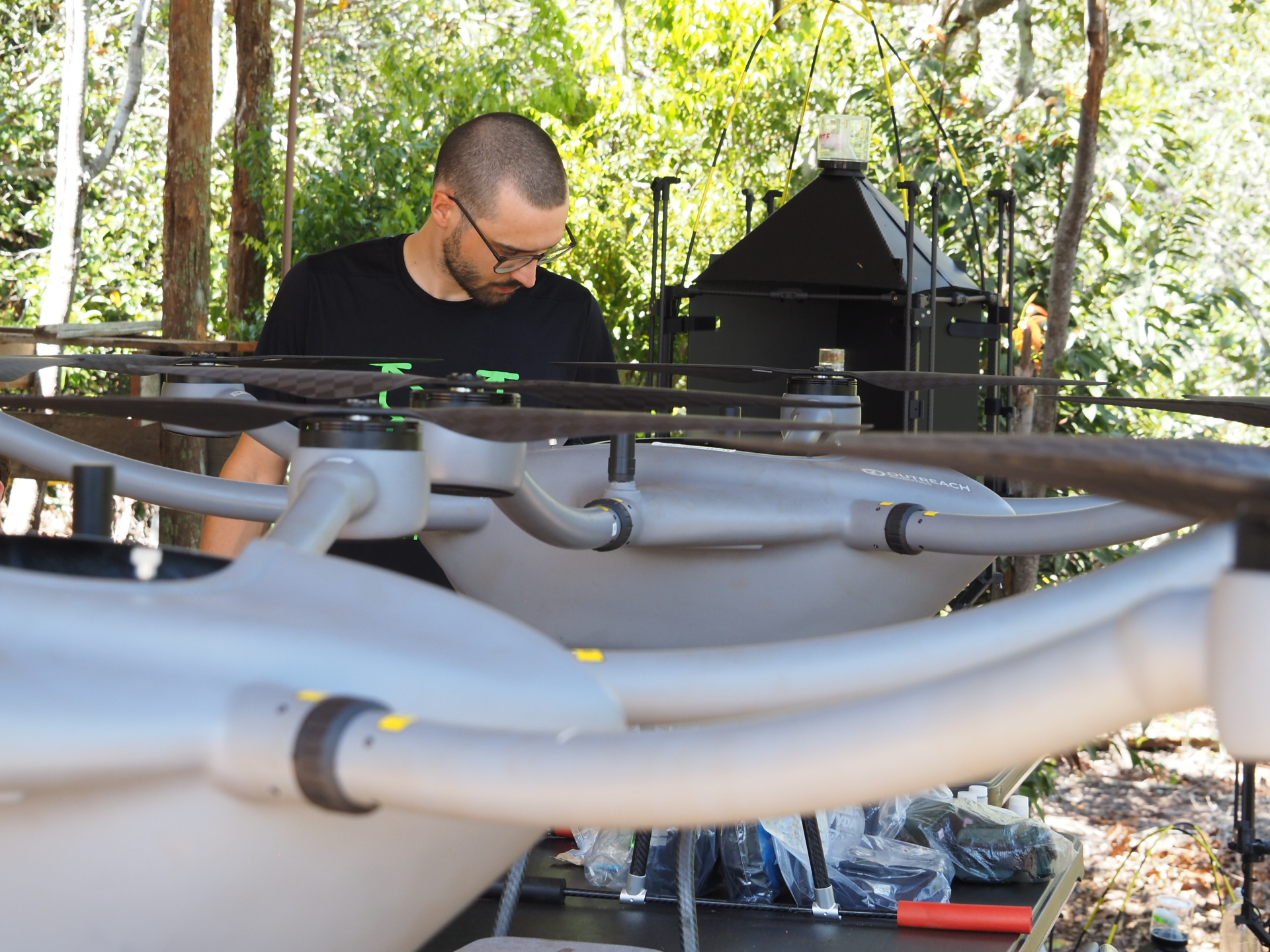
The equipment Limelight Rainforest used to survey the rainforest with the least intrusion. Photo courtesy of XPRIZE Rainforest
We sent in a proposal, and very quickly we realized we should bring some more friends on. We brought on a few more biologists, and they (the organizers) started putting these rules in like, “You can’t go into the forest. You have to fly your equipment in with drones or walk them in with robot dogs.” So, we brought on drone people and realized, “We can’t do it with just (identifying) bugs. We’ve got to do birds and bats and plants.” And then at some point we realized DNA would be central to this, and when we found the right person, she turned out to be awesome at it.
(The drones carried) air filters and water filters that were lowered down into a stream, and they just took all the DNA that was there, sequenced it and looked for any recognizable sequences. … We detected jaguars, pink river dolphins, all these amazing creatures, which you can spend 20 years in the Amazon and never see.
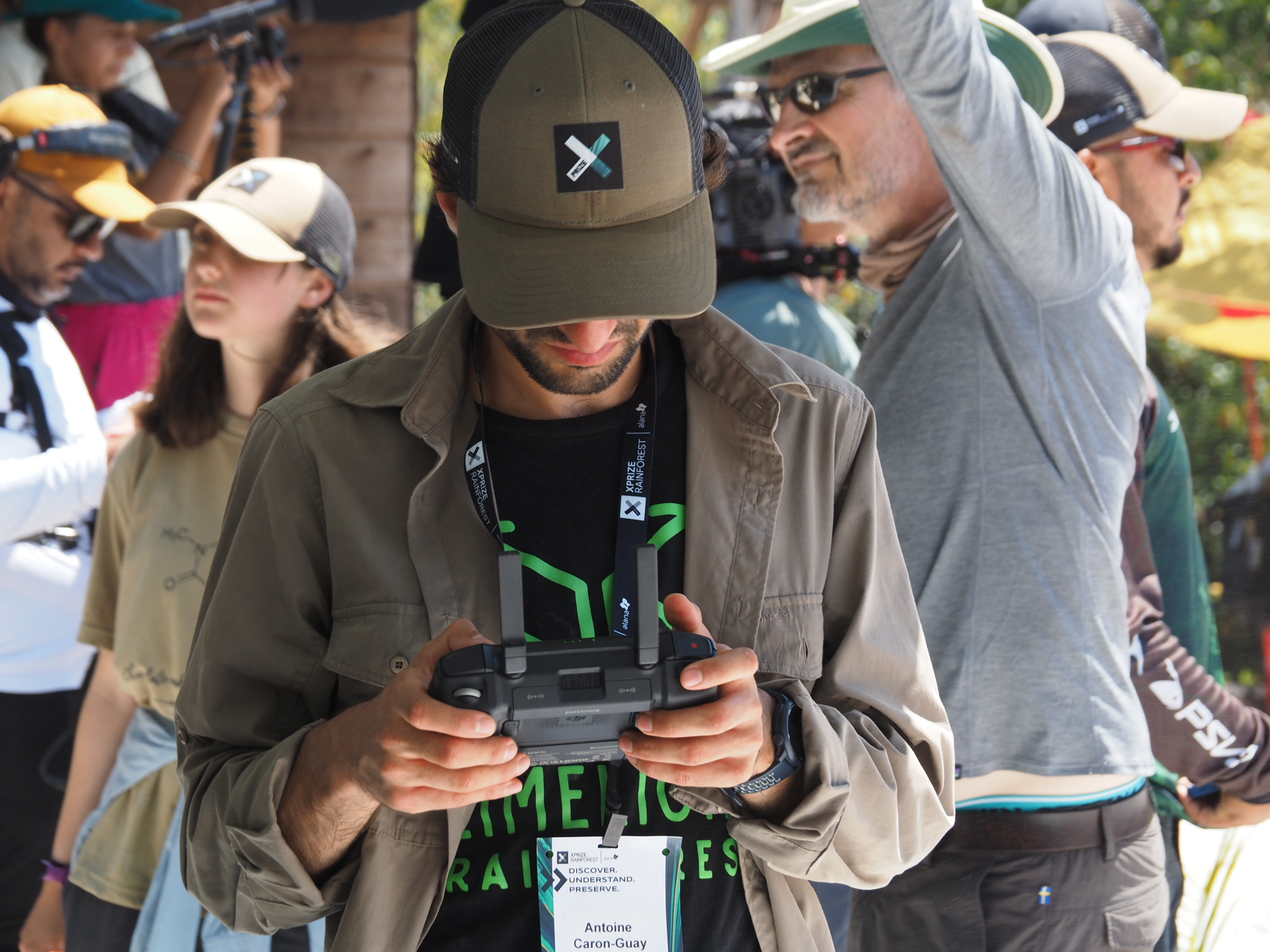
A technician at work with a drone controller with Greeney in the background. Photo courtesy of XPRIZE Rainforest
KG: As a student at Wake Forest, did you see yourself tracking bugs and birds in South America?
HG: I’ve known my whole life that I wanted to study bugs, and I lived in South America as a child. I learned Spanish then. My parents both worked for international school services, and my mom’s from rural West Virginia and my dad’s from the Adirondacks. They were both small-town kids traveling the world in the ‘60s, and they met and got married in Afghanistan. I was born in Pakistan, and that was a very sad thing for us growing up, that they lost a lot of friends when that area of the world changed. …
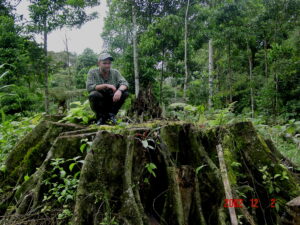
Greeney at work. Remaining photos courtesy of Greeney
We lived in Venezuela for three years when I was in grade school. That’s when I decided that when I grew up I was going to study bugs in South America. I met a professor that was down there doing that when I was in high school, and I saved his phone number and called him up while I was at Wake and said, “Hey, can I come down for the summer?” So, I did that, and when I was graduating, I said, “I want to come back to Costa Rica and work with you.” And he said, “Well, I’ve moved my operations to Ecuador. I’ll get you a job as a jungle guide if you’ll do this research project for me on your days off.”
I’d never been to the Amazon before, and about 48 hours later, I was guiding people to it. We worked with an indigenous guide, so they knew the trails, and I could translate stories about their culture and beliefs. And honestly, if you’re a biologist, you already know you can recognize bugs and plants and birds. If you’re there 24 hours longer than somebody, you can say, “Oh, that sound is a toucan.” You just learned that yesterday, but they don’t know that.
KG: You built a research station in Ecuador, from the ground up, when you were 27 years old? How did you do it?
HG: I had started graduate school (at the University of Arizona in Tucson), and it just wasn’t my thing. I had gotten far enough that I could accept a master’s degree, and I took the money I’d saved up (as a jungle guide) and just went back to Ecuador in 1999 and never looked back. …
I had $20,000, which is what it cost me to buy 200 acres. That came with five chickens, a rooster, a half-dead horse and a half-dead dog. The dog stayed around for a year, but the horse died, and by six months in I had 50 chickens. I had a roof and a platform, but that was it. I was just living out in the jungle.
It was about an hour’s walk down the hill to the nearest town, which is a town of about probably 300 people. … The town itself was like five buildings, a gas station. It was on the main road, which wasn’t paved at the time, but it was a main artery out to the Amazon from Quito.
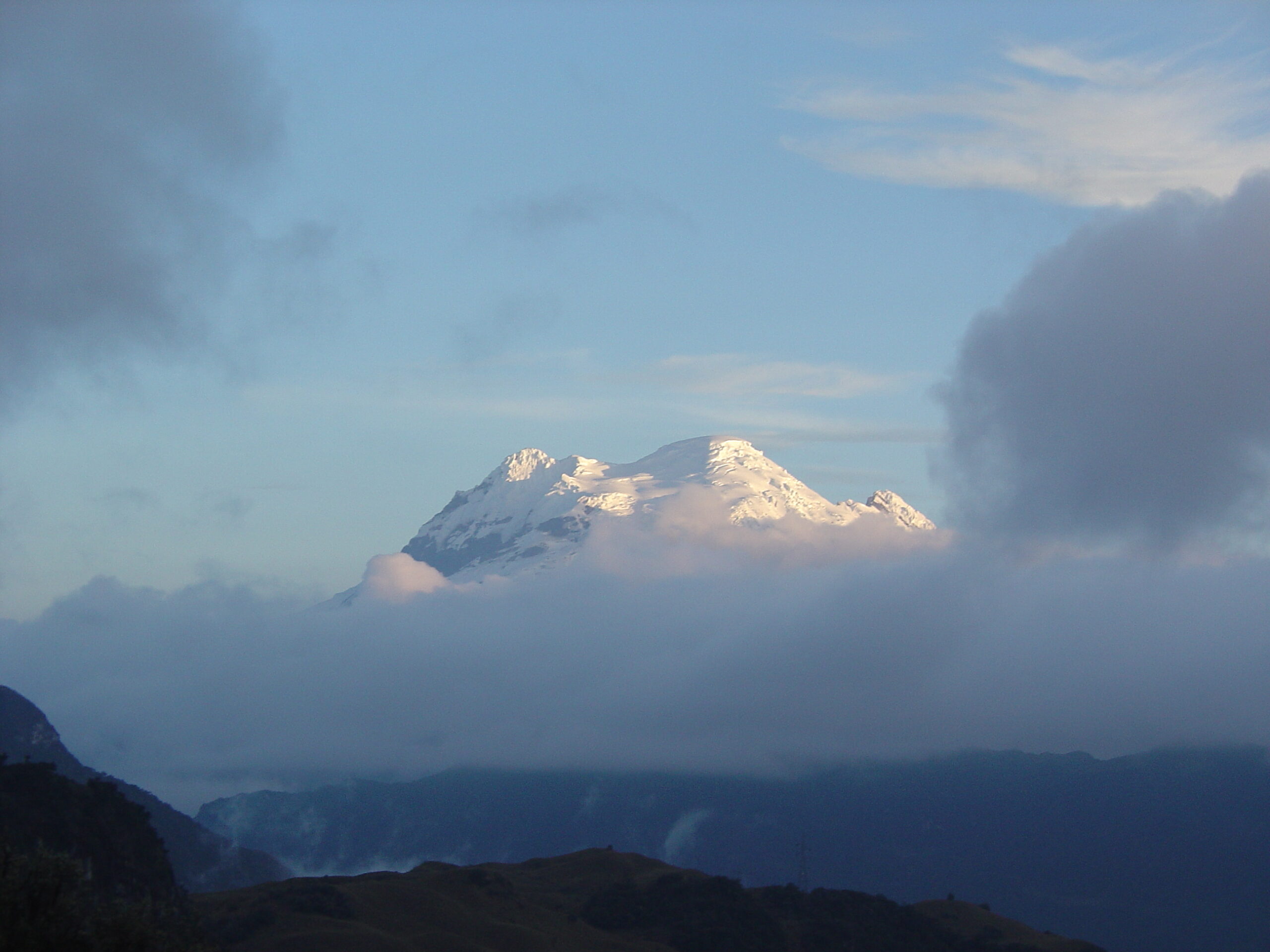
Antisana, a volcano in the Ecuadorian Andes, visible from Yanayacu
I lasted a year with about $100. I had a little area that I was successful at growing green beans and green peppers, but I could only eat so many of those myself. So, I traded (with) my neighbors. One guy had blackberries, and I traded some green beans for some blackberries, and I ate a lot of trout that I fished in the rivers, and I occasionally had to go buy a big sack of rice, and that was it. And then usually I would treat myself to a jar of some different spice that I hadn’t had the previous month, like mustard this month, or ketchup this month, or soy sauce this month. And then everything I ate was flavored with soy sauce or whatever.
I would hitch a ride out to Quito and get into an internet cafe and say hi to my mom and put out the word that I was out here. I was starting to put together some papers that I was writing, but there was no electricity or anything out there. There was no running water. And so, I spent a lot of time just building it up. I found my neighbor had a chainsaw, and when a tree fell in the wind, I would say, “Hey, can we get any boards out of this?” And he would come over and help me cut it up. And so, I slowly built the place. I put walls on, I dug a well, I built a little shower thing in the stream nearby, although I admit I didn’t use it very often. It was pretty cold there, and it’s glacier melt water, and I was living alone, so I really, once a month, even if I didn’t smell, I would go down and splash around in the stream.
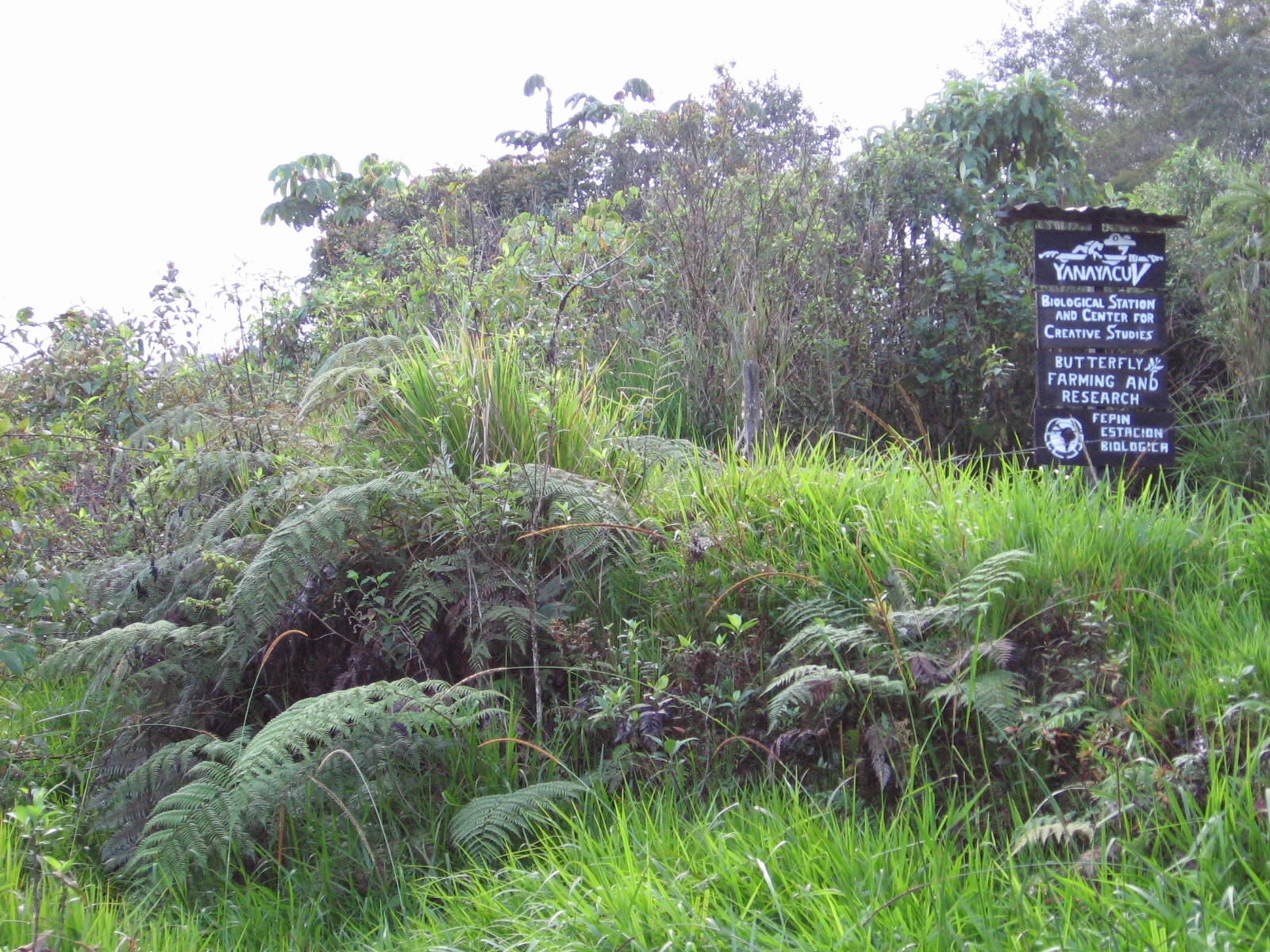
The sign for Greeney's station
And then people started showing up. They’d come up and they’d say, “How much to stay here?” And I’d say, “Well, I don’t know. What do you have?” And they’d give me some money, and I’d use it to put glass in the windows or whatever, however I could advance the place. A Canadian student came down — he was a Ph.D. student — and I had been there about a year, and I had just finished carving my first sign for Yanayacu Research Station. He had been doing research further up the road every day. After he’d been doing that for two weeks, on his way home one evening, he saw this sign. I told him what I was trying to do, and he was so excited. He said, “Well, I have money in my grant that I have to spend that pays like $15 a day.” And back then, it cost a dollar in Ecuador for a full breakfast with steak and eggs. He was going away for two weeks and handed me $2,000 to reserve his spot on the floor for when he came back. With that, I added walls and set up a system of plastic pipes, so now we had running water inside the house. It was all sort of trial and error. I would just go over to my neighbors and ask for help.
It took about 10 years for them to understand that I didn’t have some endless bank account that was just funding everything. They would see me out building something or chopping wood or cutting grass, and they were like, “Why don’t you just hire somebody to do that?” And was like, “I don’t have any money.” They’d get a big laugh out of that. It didn’t change until the station started to grow, and I hired a local kid to help me do cement work and general construction. … He started to learn English and got really into biology. I eventually ended up hiring him as the station manager.
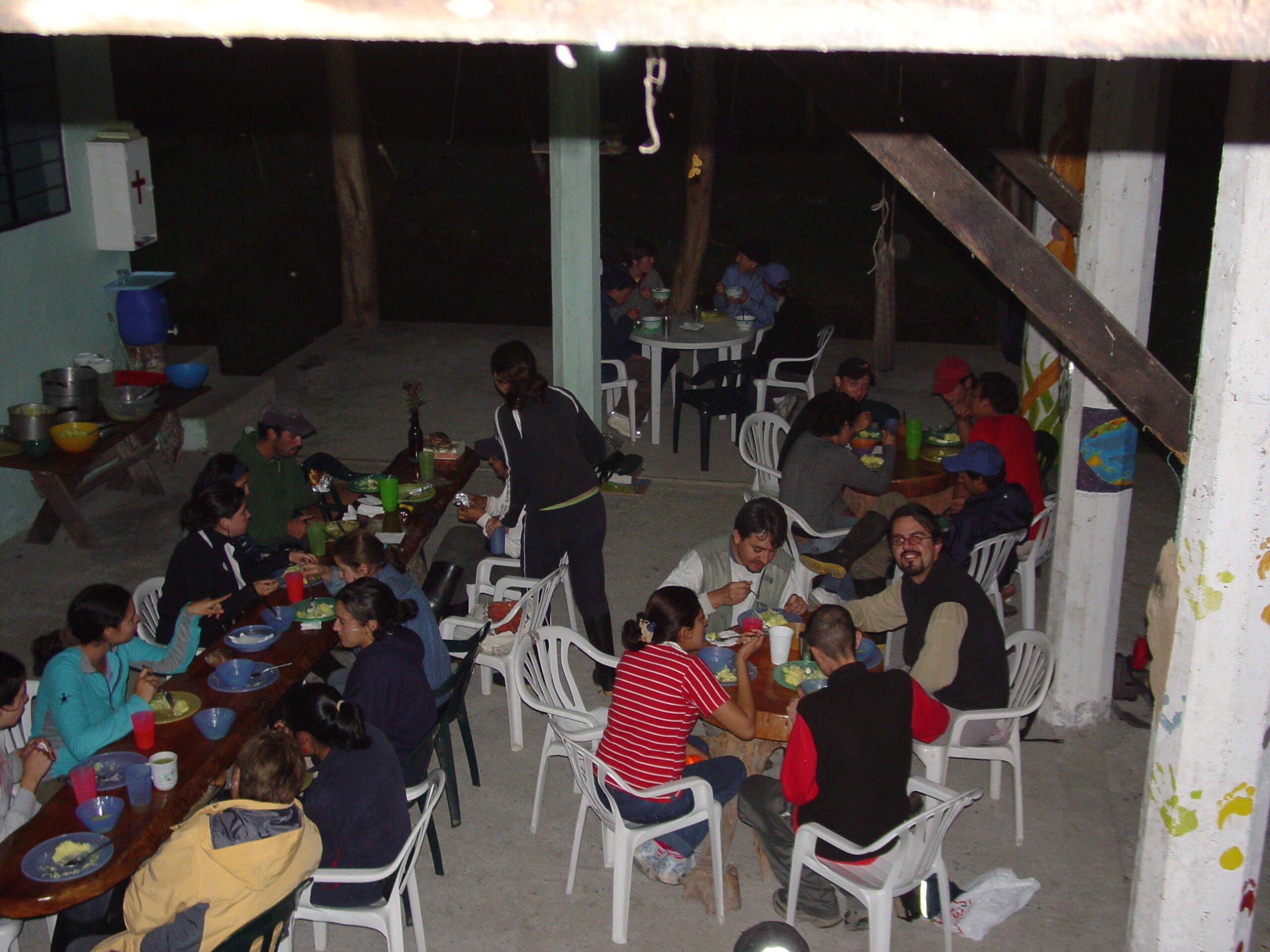
Students eating dinner at Yanayacu
By that time, we had a bunkhouse for up to 40 or 50 people. We had regular groups coming down, one after another. He was the one who was finally able to convince my neighbors and the community that this guy makes it dollar to dollar. And with every extra dollar, I would bring kids up from the local school to give little lectures about bugs. And I never charged any Ecuadorians to stay there. If times were hard, I would say, “You have to bring your own food.” But this was their land, after all.
KG: And you earned your doctorate from the University of Wroclaw — in Poland. What is the story there?
HG: I didn’t plan on doing anything with academia at all (after leaving Arizona). It was only years later that I was collaborating with some Polish scientists who said, “Hey, we didn’t realize you didn’t have a Ph.D. Why not?” … (They had) a different system. If you can write a thesis and defend it, it doesn’t matter how you got there. So, I enrolled in a Polish university for one semester and took eight papers that I had already published and built them into a long dissertation. I had to take exams from the philosophy department, and I passed all their tests. The only rule they bent was that instead of having to defend in Polish and English, they said I could defend in Spanish and English.
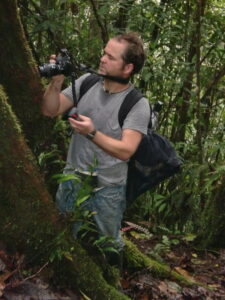
Greeney in the field
I had been studying birds for several years, working on one particular species and describing a lot of weird things in their breeding biology. Europe still appreciates the old Darwinian type of scientist who goes out and draws pictures of what they see and writes down questions and thinks of ideas and then goes back and pokes the bugs again and sees what happens and writes it down and thinks about it more.
KG: How did you make the switch from bugs to birds?
HG: I started finding bird nests while I was looking for caterpillars, and everybody made such a big fuss about it, I finally decided consciously to switch over to birds. And I found the first ever known nest to science of a little bird called the Peruvian Antpitta that wasn’t even known to live in that part of the world.
People would fly over from England, land in Quito at 11 p.m., hire a car and drive six or eight hours to where I was. They would get there very early in the morning, have a cup of coffee, walk an hour and a half out into the forest with me down a muddy trail, look at the bird for 15 minutes, turn around and fly back that night, just to say they had seen the bird. They’d say, “Thank you so much for doing that. Here’s $1,000.” And I’d go, “Whoa!”
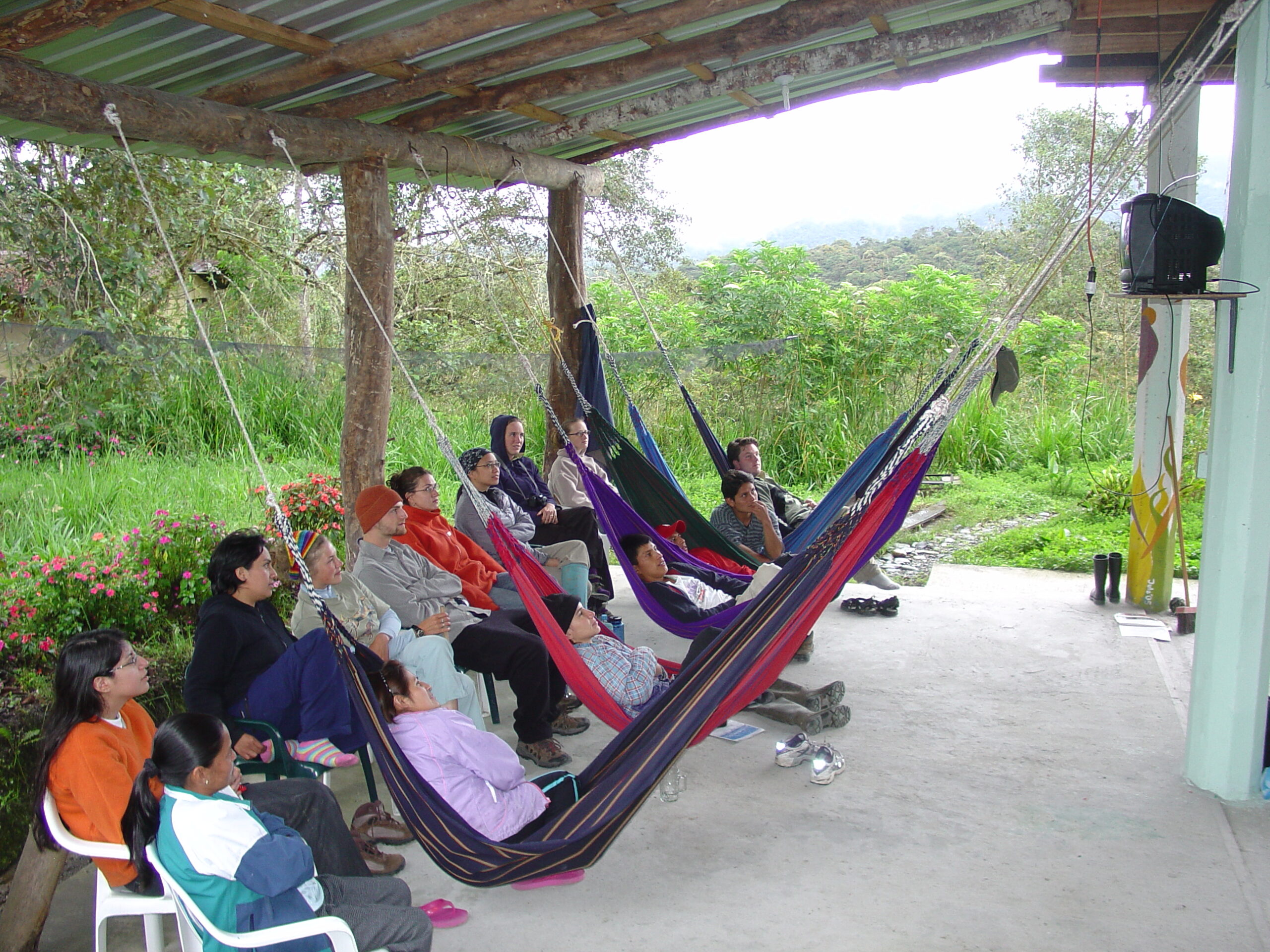
Students at the station watching soccer: Ecuador vs. Poland
KG: Why did you move back to Arizona?
HG: In 2013, we decided to come back to the States. I had met a woman from California, and we decided to have children, but my mom and dad were in Arizona and her parents are in California. So, we moved up here to have kids. And at that point, I basically just handed the station over to my employees, and I said, “You have all the customer base, you have the facility, you guys run it on your own.” And so, they just ran it for another 10 years, and COVID hit it pretty hard. It sort of has collapsed business wise, but it’s recoverable. And so that’s what I’m going to do with some of my winnings, put money back into it and revive it. My intention for it originally was to, and it worked for many years, have artists and writers that would come down that do a sabbatical and write a book or do a series of paintings or whatever.
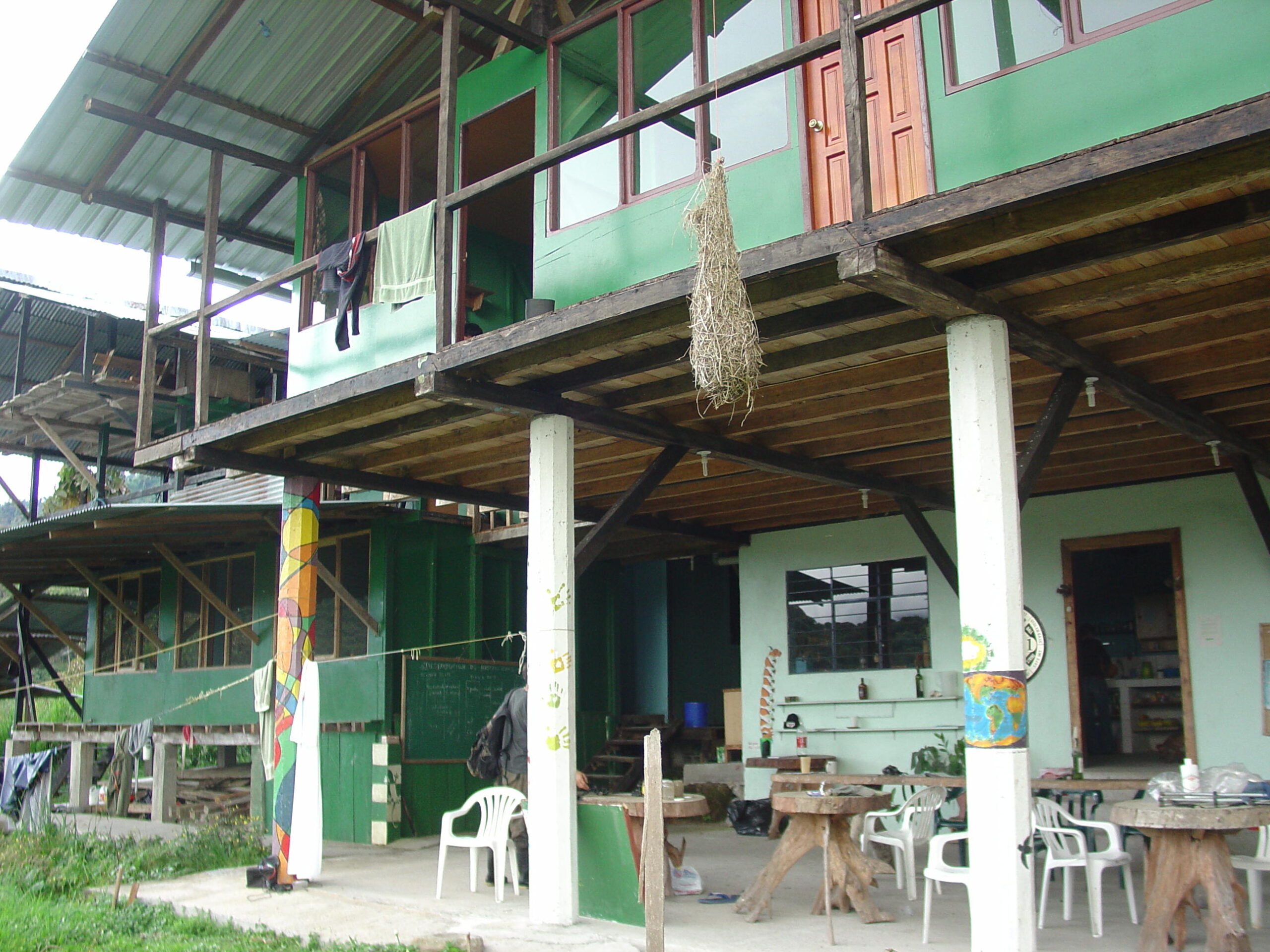
Yanayacu's front porch
KG: That’s why the name is now the Yanayacu Biological Station and Center for Creative Studies?
HG: Yeah, that was my idea. My thought was, “If I’m going to live somewhere so cool, I want to have cool people around me. And I don’t want them all just to be biologists, because you end up in your own little world, and it’d be really nice to hear what somebody’s writing.”
Over the years, it’s grown and changed so much there. Now, there’s a whole guides association for that section of Ecuador, which started at the station. The guides association invited me down last fall and honored me at this big dinner. Everybody knew me, and they were in first grade when I worked with them, and now they’re adults. It was really neat to see the little seeds I had planted way back then.
Have you ever heard of the Audubon Christmas Bird Count? We started doing that about 20 years ago there at the station. … We simply had more birds in our circle than anybody else in the world. I mean, that’s location, location, location.
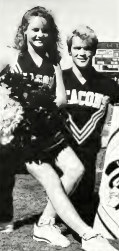
Jennifer Inglis Oswald ('93, P '21, P '24) and Greeney in 1990. Photo from The Howler, 1991
KG: When I heard about you winning the XPRIZE and looked you up, I found a photo of you as a cheerleader at Wake Forest. How did you wind up taking a turn as captain of the cheerleading team?
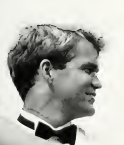
Greeney cheering at Wake Forest Homecoming in 1990. Photo from The Howler, 1991
HG: My suitemates dared me to try out, and honestly, I went as a joke. I was a diver in high school. I was a scrawny little kid. I’d never tried gymnastics, and I couldn’t lift any of the girls. … But to get the $200 my suitemates bet me, I had to stay and really try out. They asked if anyone could tumble, and I said I was a diver and could try something. So, they showed me how to do a backflip, and they picked me to be the small tumbler guy. But this is Wake Forest, so they gave me a football trainer, and I put on 60 pounds of muscle and was able to lift the girls. … I was captain my senior year. I was good at the stunting and the tumbling, and when I hit on something that I’m good at, I’m not afraid to push the limit.
Harold, thank you for sharing your fascinating work with us.
HG: This has been really fun. Thank you.
